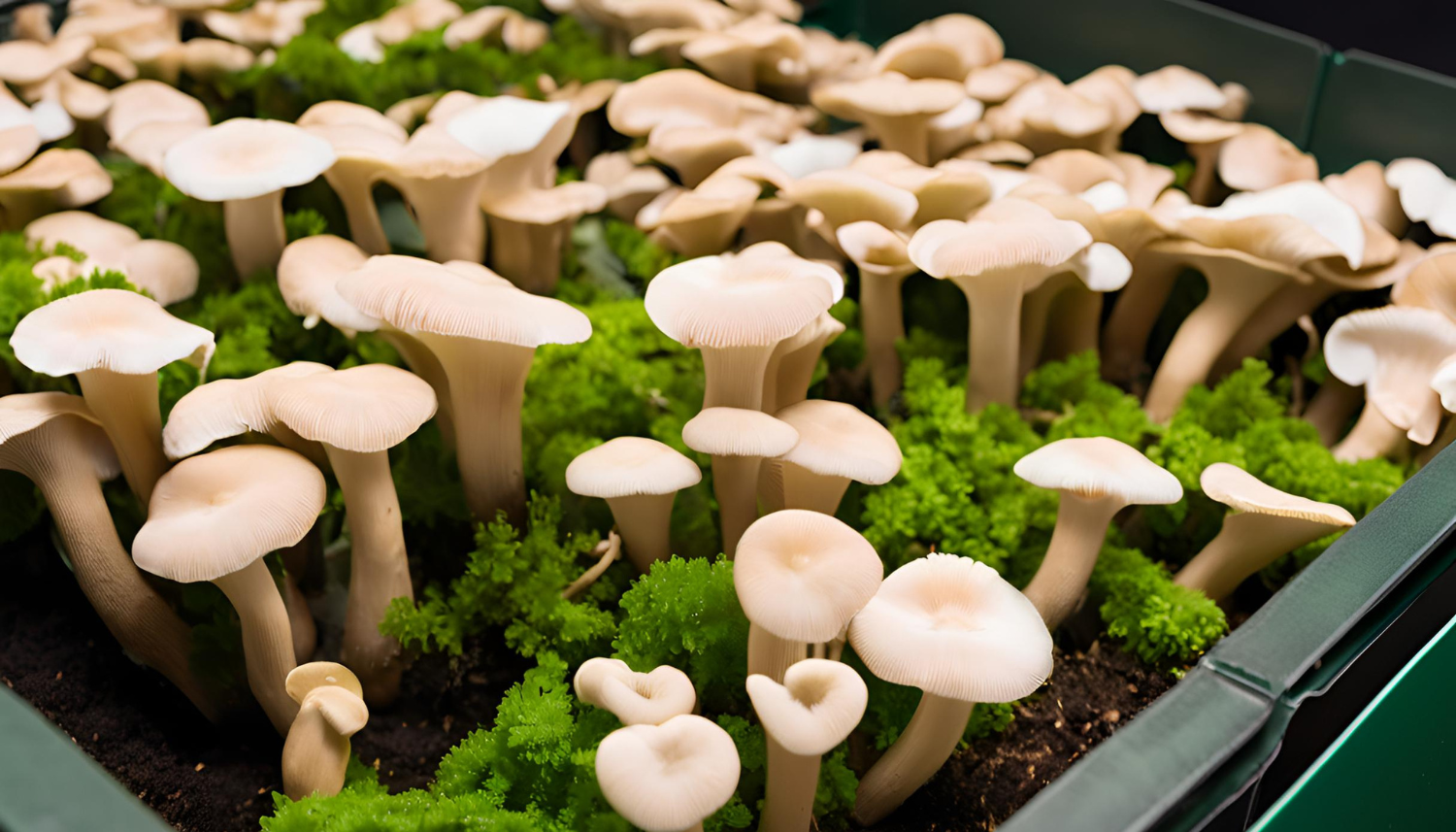Oyster mushrooms are a popular choice for home gardeners because of their ease of cultivation and rich, earthy flavor. However, several problems can occur during the growing process. In this blog post we discuss the most common problems when growing oyster mushrooms and how to solve them.
What are the ideal growing conditions for growing oyster mushrooms?
Oyster mushrooms thrive best in a dark, moist environment with temperatures between 10-20°C. They grow on various substrates, such as straw, coffee grounds and sawdust. It is important to create the right conditions to ensure a successful harvest.
How to grow oyster mushrooms?
Necessary materials
- Growing medium: Straw, wood shavings, coffee grounds or cardboard.
- Oyster mushroom spawn: Mycelium ready to grow, available from specialized stores.
- Container: A bag or box to hold the substrate and brood.
- Spray bottle: To maintain humidity.
Steps for Growing Oyster Mushrooms
1. Preparing the Substrate
- Straw: Pasteurize the straw by boiling it for an hour, then drain and cool.
- Coffee grounds and cardboard: These do not need to be pasteurized.
2. Inoculating the Substrate
- Mix the brood evenly with the prepared substrate and place it in a container, making sure that there is as little air in it as possible.
3. Incubation phase
- Store the container in a warm, dark place and keep the substrate moist. The mycelium will spread through the substrate in about two weeks.
4. Growth phase
- Move the container to a brighter spot (out of direct sunlight) and continue to spray regularly. Small mushroom buds will appear and grow into mature mushrooms within a week or two.
5. Harvesting
- Harvest the mushrooms when the edges of the caps begin to fold or curl upward by gently twisting the base of the mushroom.
How can we monitor the growth of the oyster mushrooms and when is it time to harvest?
It is important to regularly check the growth of the oyster mushrooms. Keep the substrate moist and watch for signs of mycelium growth. Harvest the mushrooms when the caps begin to wrinkle or curl upward. This is usually within a week or two of the buds appearing.
Where do oyster mushrooms grow?
Oyster mushrooms grow on a variety of substrates, including straw, wood shavings, coffee grounds and cardboard. These substrates provide the nutrients necessary for mushroom growth.
Common Problems and Solutions
1. Contamination by Fungi and Bacteria
Problem: Contamination by rival fungi such as Trichoderma (green mold) or bacteria.
Solution:
- Use fresh coffee grounds to minimize contamination.
- Keep the grow kit closed as much as possible to keep other fungi out.
- Gently remove contaminated areas with a clean spoon.
- Make sure the coffee grounds are moist enough, as Trichoderma thrives in dry soil.
2. Improper Humidity Levels
Problem: Substrate is too wet or too dry.
Solution:
- Make sure the substrate has a moisture content of at least 50%.
- Allow the substrate to drain well after pasteurization.
- Weigh the substrate to ensure it has absorbed the correct amount of water (twice the dry weight).
3. Bad Colonization
Problem: Mycelium does not colonize the substrate properly.
Solution:
- Use sufficient brood (spawn) to ensure fast and reliable colonization.
- Keep the bucket at room temperature (18-24°C) and avoid direct sunlight.
- Check for proper humidity levels and avoid contamination.
4. Slow or No Fruiting
Problem: Mushrooms don't form or take too long to form.
Solution:
- Place the bucket in a shady, moist area.
- Mist the bucket regularly to maintain high humidity.
- Avoid windy locations to prevent the mushrooms from drying out.
5. Broken Mushrooms
Problem: Mushrooms dry out and stop growing.
Solution:
- Keep the bucket in an environment with high humidity.
- Mist the bucket several times a day to maintain moisture levels.
- Protect the bucket from direct wind.
6. Insect pests
Problem: Insects such as fungus flies contaminate the bucket.
Solution:
- Use micropore tape over the holes to prevent insects from entering.
- Harvest mushrooms early to reduce the risk of insect pests.
7. Unpleasant Odors
Problem: Bucket gives off a bad odor.
Solution:
- This may indicate contamination or incorrect humidity levels.
- Ensure proper pasteurization and hygiene practices.
- Check and adjust the moisture content of the substrate.
By addressing these common problems with the given solutions, growers can improve their chances of successfully growing oyster mushrooms.
Conclusion
Growing oyster mushrooms can be a rewarding and enjoyable experience if the right conditions and techniques are applied. By paying attention to humidity levels, hygiene and using fresh substrate, common problems can be prevented. With patience and care, you can enjoy a bountiful harvest of delicious oyster mushrooms.
---
Frequently Asked Questions (FAQ)
How long does it take to grow oyster mushrooms?
The whole process takes about 5-6 weeks, from inoculation to harvest.
Can oyster mushrooms be grown outdoors?
Yes, as long as temperatures remain above 10°C, oyster mushrooms can be grown outdoors.
How many oyster mushrooms can I expect to harvest?
You can harvest about 25% of the weight of the substrate in mushrooms.
Can you harvest multiple times from the same substrate?
Yes, you can usually harvest 2-3 times from the same substrate.
How do I store fresh oyster mushrooms?
Store fresh oyster mushrooms in a paper bag in the refrigerator, where they will keep for up to a week.
With these tips and solutions you are well on your way to successfully growing oyster mushrooms and enjoying your own fresh harvest. Good luck and have fun growing!


